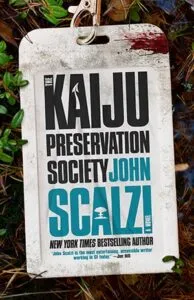
Book Fair Bonanza: Five Tips To Make Your Book Fair Run Smoothly
There is no shortage of nostalgic memories when it comes to the book fair. While there are lots of nifty indie book fairs that offer community-tailored set ups, the collective experience largely recalls the Scholastic Book Fair, which has been selling books (and light up pens) in schools since the ’80s. While the throwback memes are relatable, my job as a school librarian has completely changed my relationship to the book fair. There is still a lot of joy, but a lot more chaos, and often, a helpful pay off to support my library and programming.
I just closed out the eighth book fair I’ve run at my elementary school, and I have to say I’ve learned a lot from running a small pop-up store three times yearly. Knowing what to add, what to cut, and where to direct my energy has been learned over time, and of course, it always varies depending on your school population and circumstances. Despite that, I’ve tried to gather some helpful tips for anyone taking on the project of running the book fair. Hopefully you’ll find some wisdom to support you on this wild ride.
Fix Your Focus
As corny as it sounds, fixing your focus really will help every other policy and decision fall in line. Why are you holding a book fair? Is this a fundraiser for your school? Is this a literacy initiative to get books in the hands of families? Are you rewarding kids with access to book choice? The answers to these questions will change the way you run your fair. If the book fair is a fundraiser, then promotion and getting parents to send money is a priority. Your energy should go to making it easy for parents to understand the schedule/book prices and there should be simple ways to get funds to the school (online options, cash, clear check info, etc.). If you are trying to build joy and incentivize reading, then money should be less of an obstacle. Your energy should go into getting partners to sponsor children who aren’t able to shop. If the purpose doesn’t feel clear, everything else is HARD.
At my school, I’ve made the decision to have some fairs be for fundraising and some for book joy. Our November fair is a fundraiser. If someone is unable to purchase a book, I have a preferred activity available during shopping time, and make sure they can weigh in on titles they’d like me to add to the library. In March, every child gets a book regardless of their ability to pay. I obviously make less of a profit in March, but focusing on raising money in November makes it possible to offer free books at our spring fair. When I first started, I felt crappy when kids couldn’t participate and tried to slip library-purchased books to every kid who felt bummed — this ended up tanking profits and being messy. Clear expectations for myself and with the students has helped enormously.
Pick Your Promotions
When you work with Scholastic to set up a book fair, there are so many options for ways to promote the fair. You will be encouraged to run special events for parents, grandparents, and teachers. You will be given signage, social media templates, flyers, and more. If you happen to be a school librarian, you’ll be shoehorning all of this preparation into your normal teaching schedule. I have learned the hard way that overwhelm is real.
It might take a little trial and error, but I highly suggest that you narrow down the ways you promote the fair. The majority of my school’s population has caretakers that work or watch small children when their kids are at school, so while we invite parents to come and shop with their kids, I don’t put together any giant events that require parents or grandparents to participate. I do, however, take the time to customize the principal’s letter template, because emails from our principal are one of our school’s main forms of communication.
Additionally, I have stopped trying to fit book fair prep around my teaching and make it the focus of the lesson in the week leading up to the fair. This is when I share book trailers for titles that will be at the fair, pass out schedules and book flyers, and go over the specifics of how things will run with each individual class. It makes things easier for me and also builds hype for the fair, which usually leads to more successful sales when things finally get underway.
Cut Way, Way Back
I’m going to state right away that I’m sharing a personal choice: skip the decorations. Every year the Scholastic Book Fair has a theme for each of their seasons, and you can purchase kits of table runners and the like to help you decorate around the theme. I have known librarians who get really into decorating and even commission large cardboard murals or have people wear costumes to up the spirit. This is fun, and might be a personal spark of joy for certain fair runners. But it’s super not necessary. The act of opening the metal cases and raising the included cardboard headers is more than enough to transform the space and incite excitement.
This year I went a step further and simplified how I displayed things. Every fair comes with an assortment of 20 or more poster designs, stored vertically in a tall, thin box. In the past I’ve gone out of my way to display one copy of every design and assign them a reference number so I can look up which poster a student wants to buy. It’s SO much work. This year my fair materials arrived late and I simply…didn’t. I opened the tall, thin box and left it near the register. Reader, I sold more posters than ever.
My point is, there is enough excitement without creating extra work for yourself. Set things out as simply as you can and save your energy for problem solving and counting money.
Restock Early. No, Earlier.
Once the fair is rolling, restocking popular titles is my biggest source of angst. With 500 students coming through the fair in four days, with unlimited makeup shopping periods for any student who brings money, certain things run out fast. It’s incredibly difficult to predict which titles will run out, even with a day of sales under your belt. With Scholastic, you also have to make a call to place orders, which means a pause in the middle of sometimes wildly busy days to connect, wait on hold, and then individually request titles.
I have found that without a solid plan, I am deeply disappointing my mid-week shoppers. I make it a point to carve out time to call in and request a reorder of more than what I think I’m going to need. I always sell all of it.
Make a Binder
This last tip is straight from my girl Leslie Knope. It always seems obvious, but it took me years to do it: make a binder! If you have one place where all the info is stored, this start up process will get easier and easier every time. I actually have two iterations of this tip: a physical binder and a Google Drive folder. In it I keep things like a record of the start up cash I need to request, copies of our tax exempt certificates, templates for schedules and parent letters, templates for the volunteer schedule, the signage I use to point out teacher wishlist piles, phone numbers to contact Scholastic to reorder books and the direct number to my nearest Scholastic warehouse…honestly, every year I find myself scrambling to find a bit of info and make sure it’s tucked away to make my next fair simpler.
I hope you’ve found something to help you with your book fair planning. I could ramble about book fairs all the livelong day (just ask my patient coworkers!) but this is definitely enough to get you started. Please feel free to reach out if you have any questions — some of my most helpful tips have come from chatting with other librarians. Whether you’re in it to raise money or spark the next generation of book fair nostalgia, keep up the awesome work!














